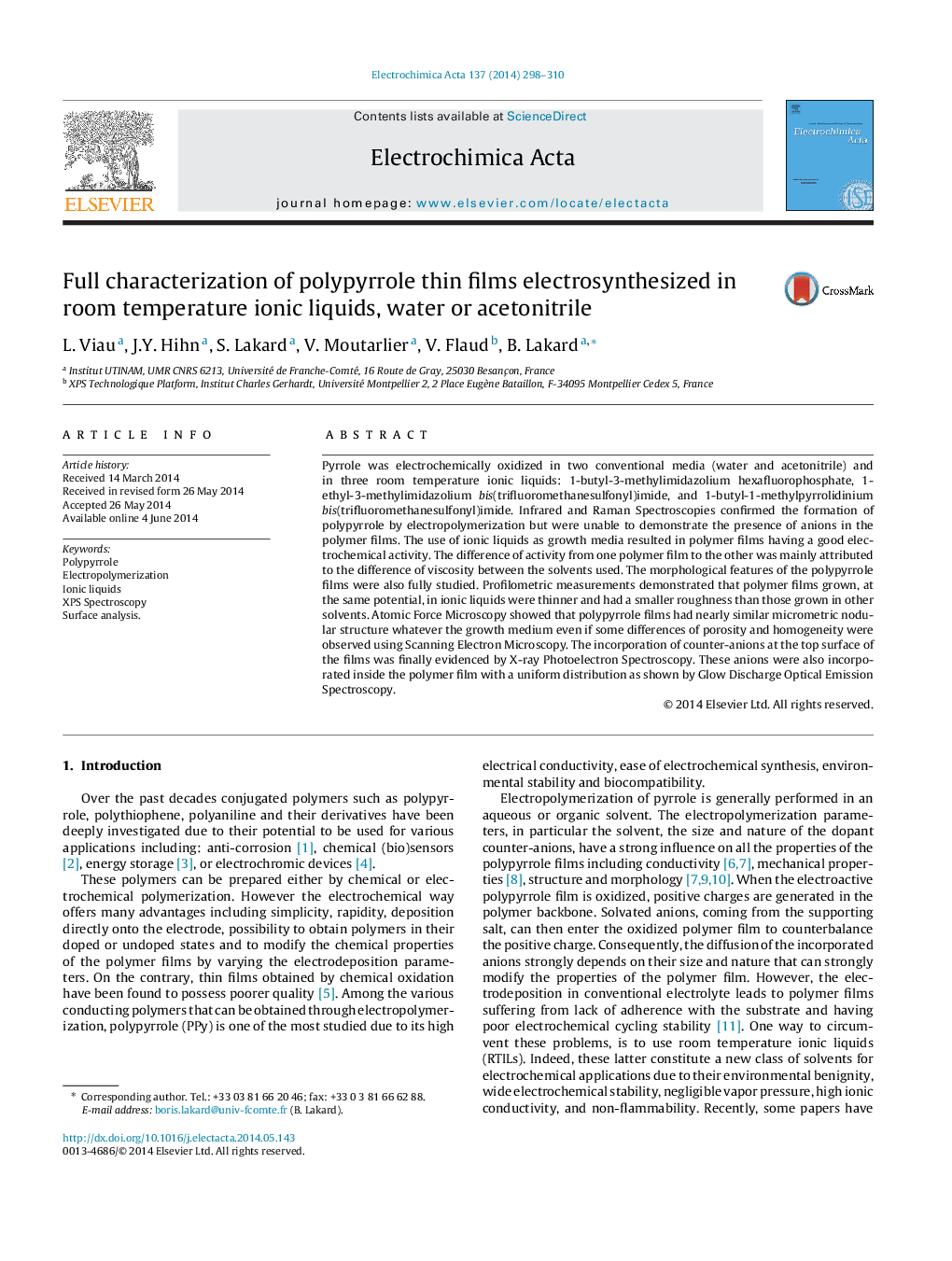| Article ID | Journal | Published Year | Pages | File Type |
|---|---|---|---|---|
| 185576 | Electrochimica Acta | 2014 | 13 Pages |
•Polypyrrole films were electrodeposited from three room temperature ionic liquids.•Polymer films were characterized using many surface analysis techniques.•The incorporation of anions and/or cations inside the polymer films was evidenced.•The influence of the ionic liquid on the polymer properties was deeply studied.
Pyrrole was electrochemically oxidized in two conventional media (water and acetonitrile) and in three room temperature ionic liquids: 1-butyl-3-methylimidazolium hexafluorophosphate, 1-ethyl-3-methylimidazolium bis(trifluoromethanesulfonyl)imide, and 1-butyl-1-methylpyrrolidinium bis(trifluoromethanesulfonyl)imide. Infrared and Raman Spectroscopies confirmed the formation of polypyrrole by electropolymerization but were unable to demonstrate the presence of anions in the polymer films. The use of ionic liquids as growth media resulted in polymer films having a good electrochemical activity. The difference of activity from one polymer film to the other was mainly attributed to the difference of viscosity between the solvents used. The morphological features of the polypyrrole films were also fully studied. Profilometric measurements demonstrated that polymer films grown, at the same potential, in ionic liquids were thinner and had a smaller roughness than those grown in other solvents. Atomic Force Microscopy showed that polypyrrole films had nearly similar micrometric nodular structure whatever the growth medium even if some differences of porosity and homogeneity were observed using Scanning Electron Microscopy. The incorporation of counter-anions at the top surface of the films was finally evidenced by X-ray Photoelectron Spectroscopy. These anions were also incorporated inside the polymer film with a uniform distribution as shown by Glow Discharge Optical Emission Spectroscopy.
Graphical abstractFigure optionsDownload full-size imageDownload as PowerPoint slide
